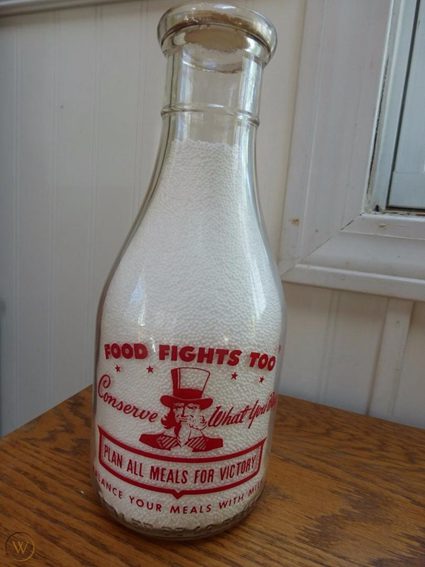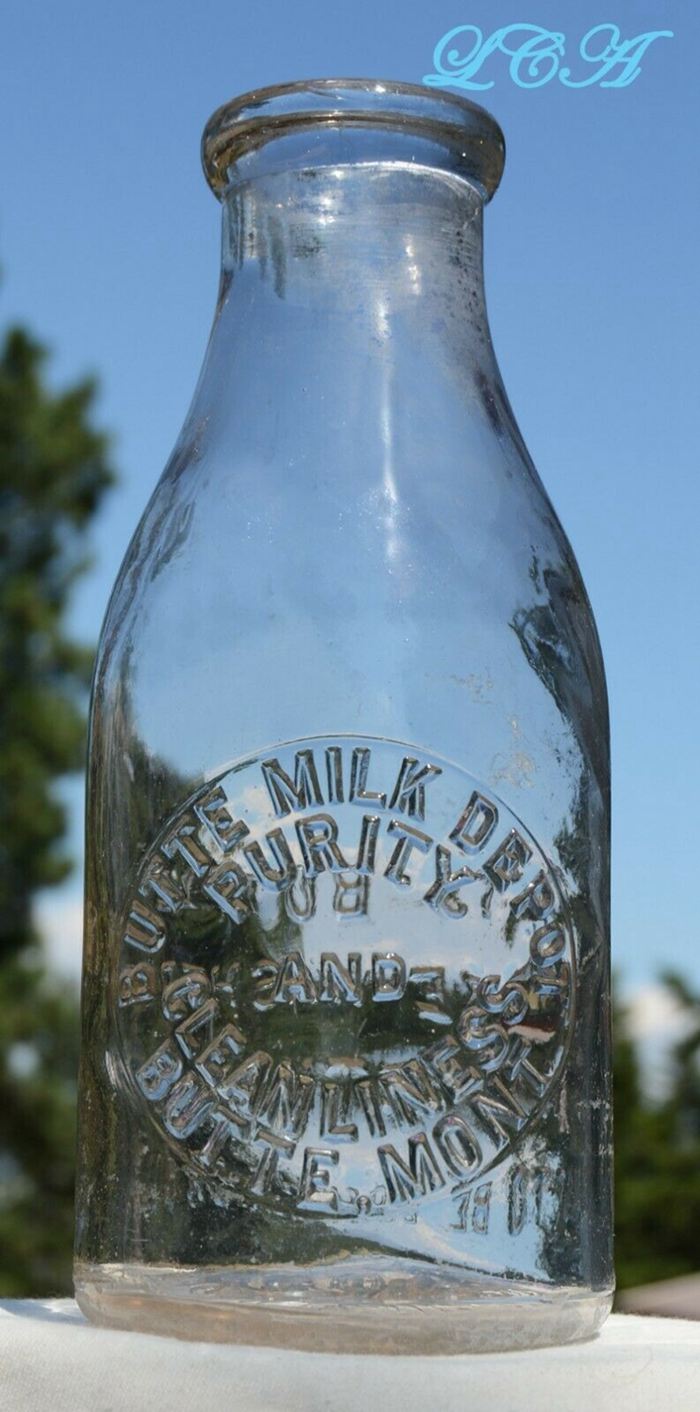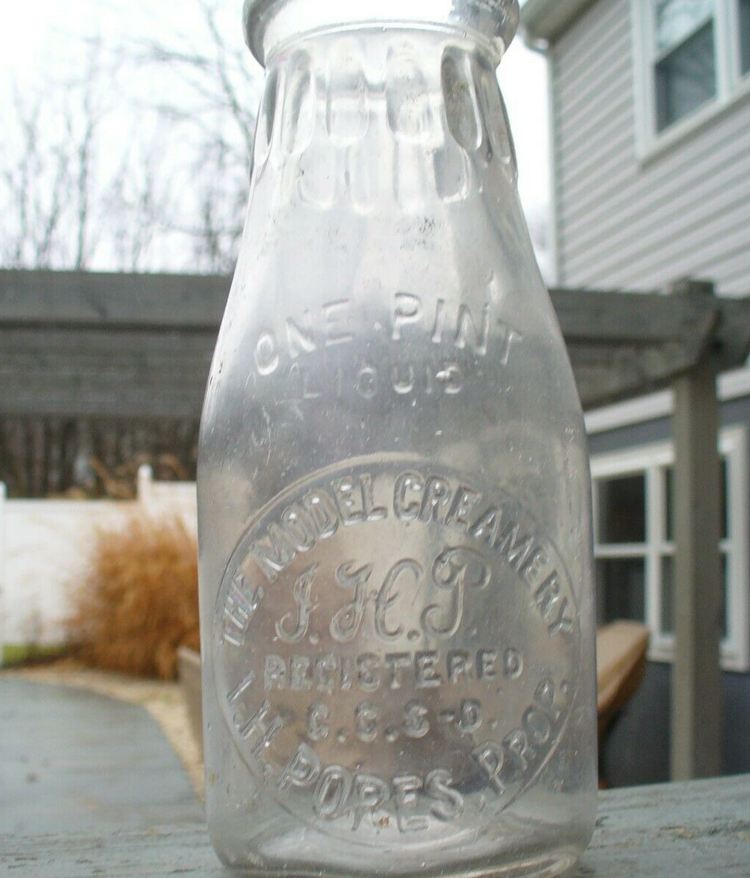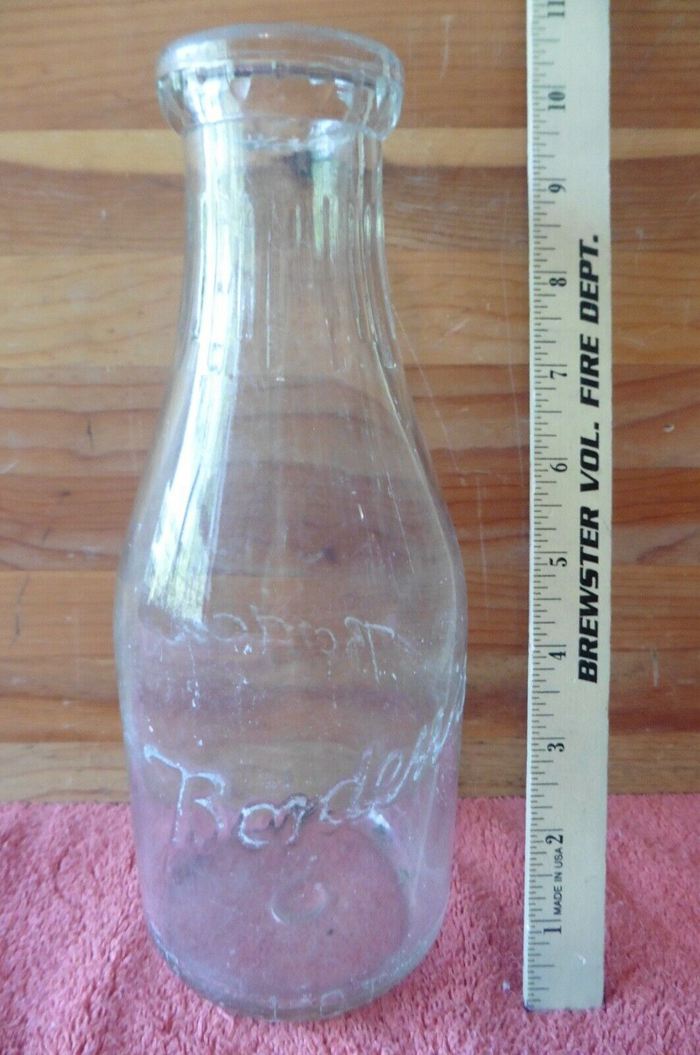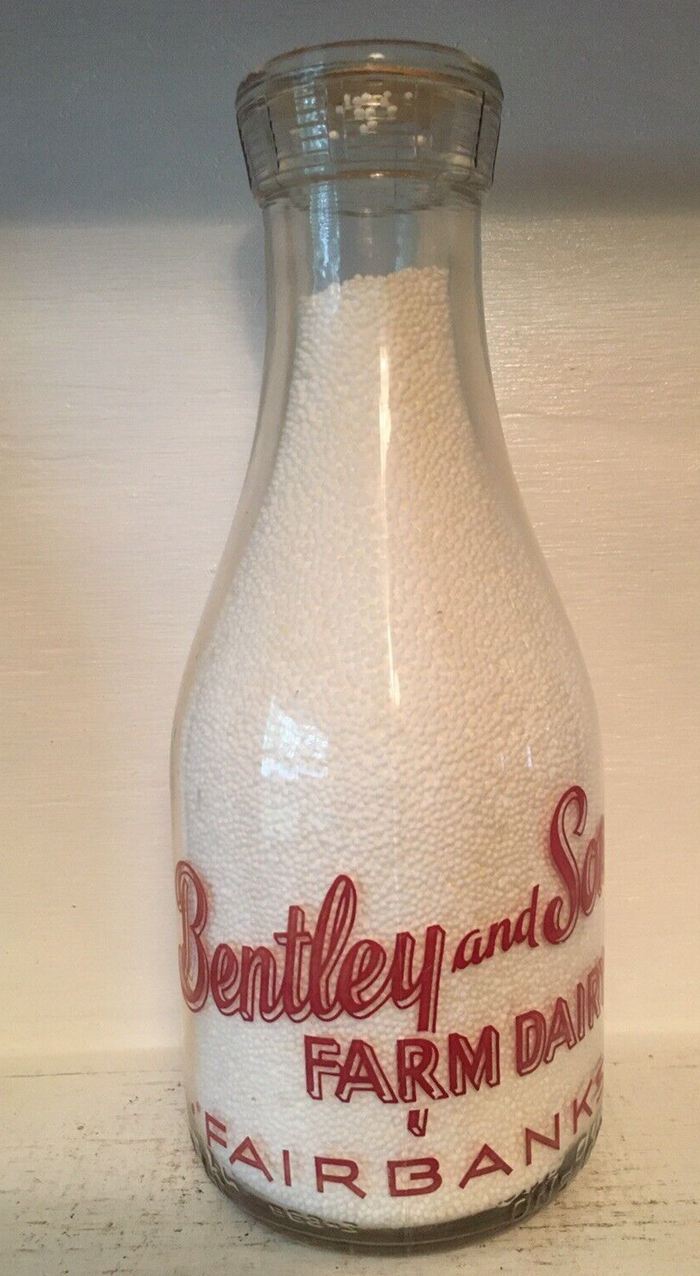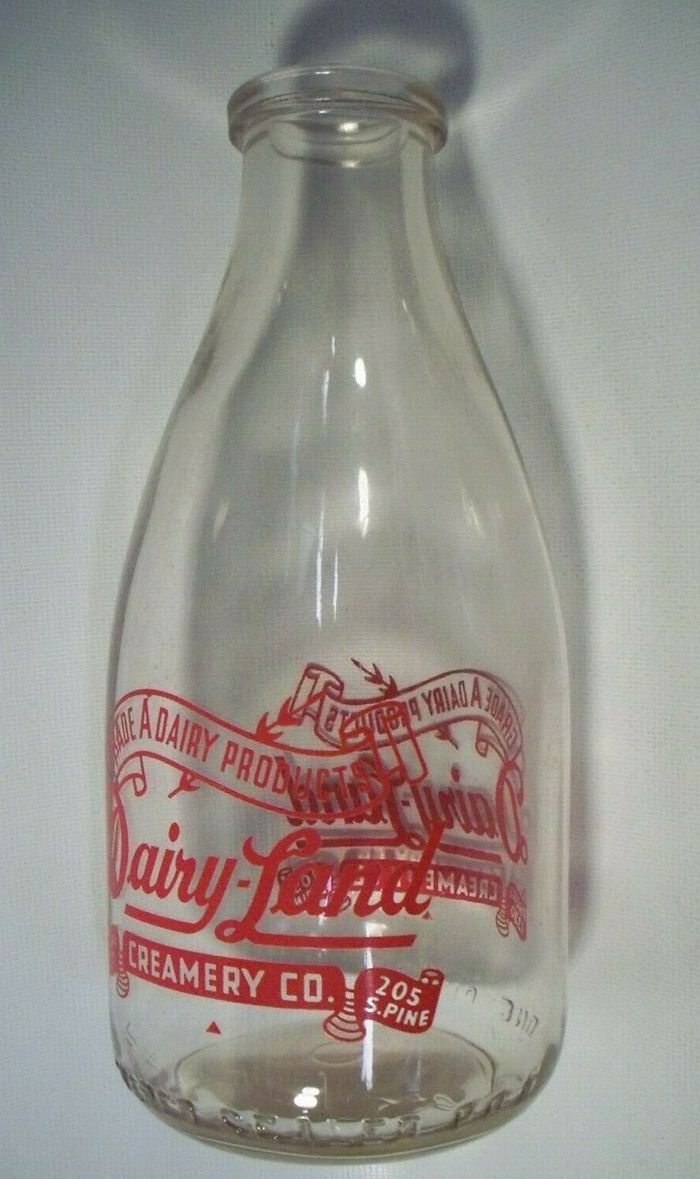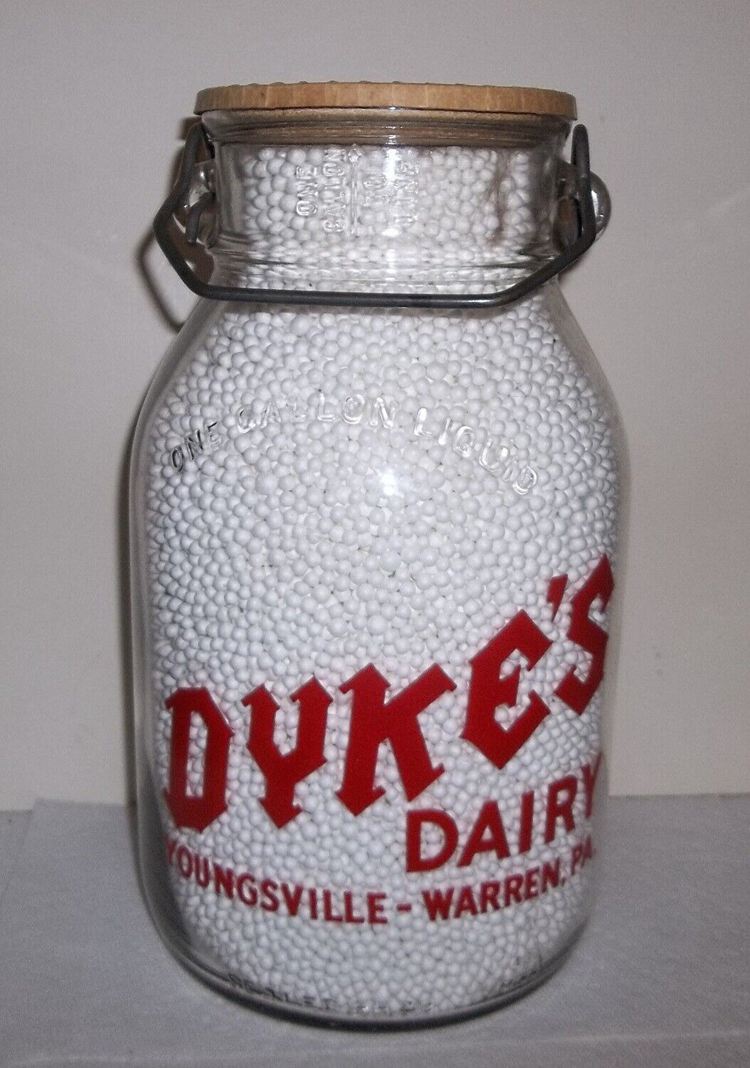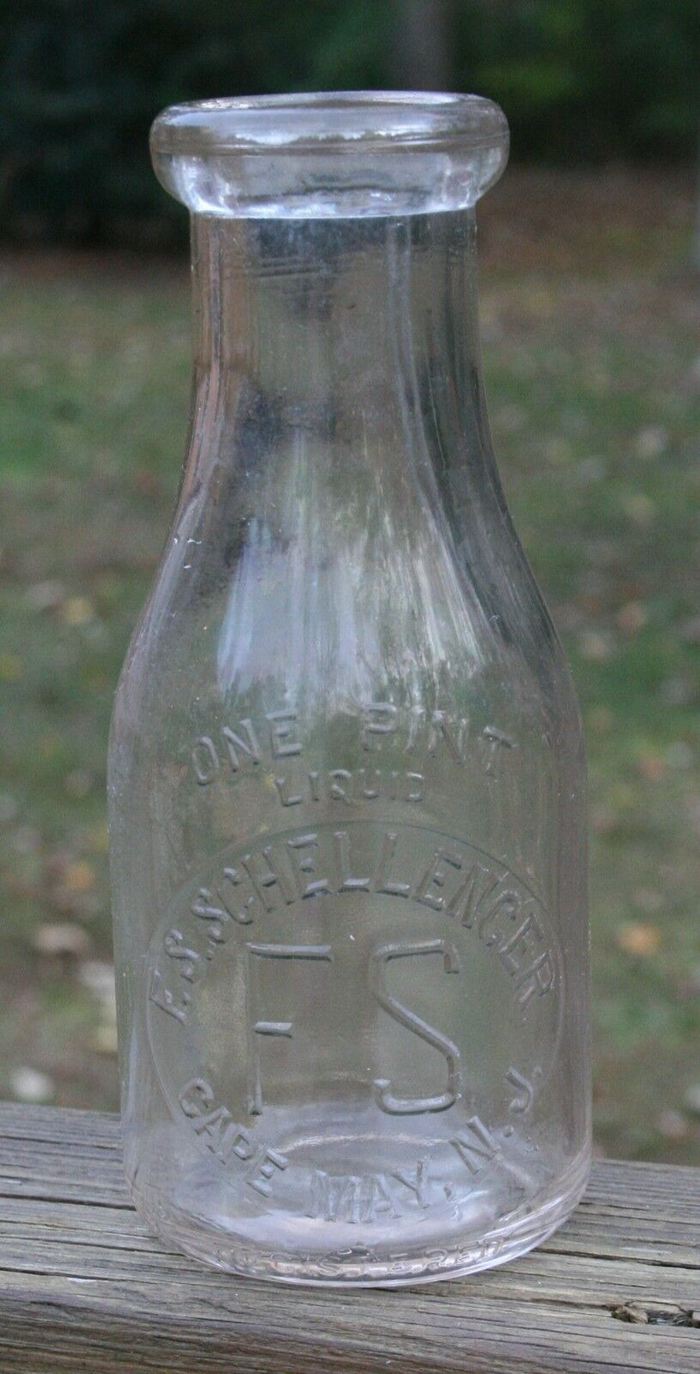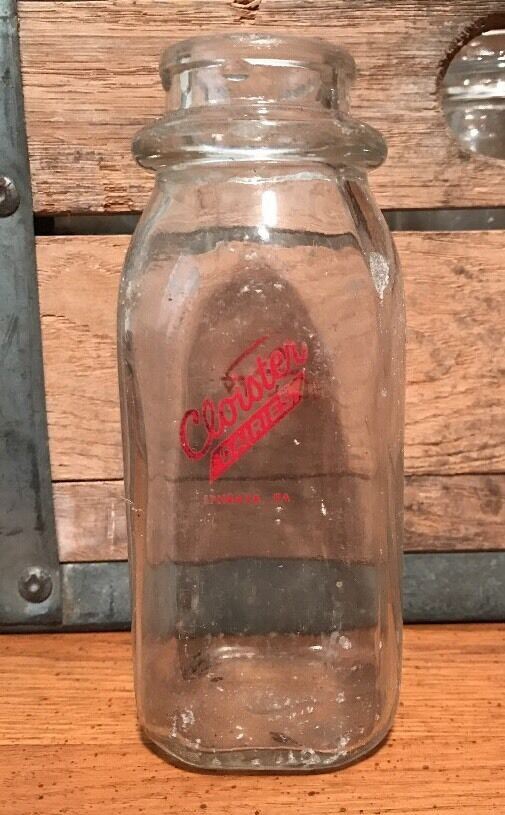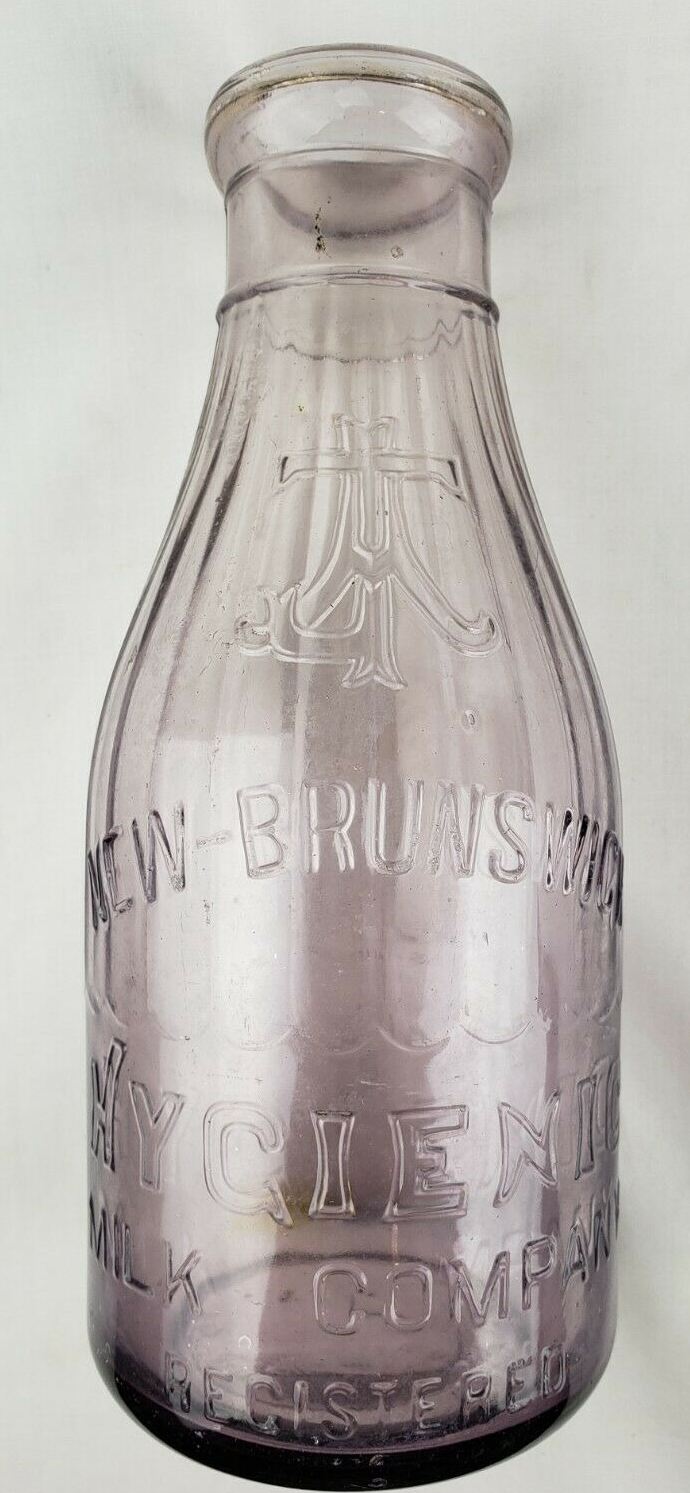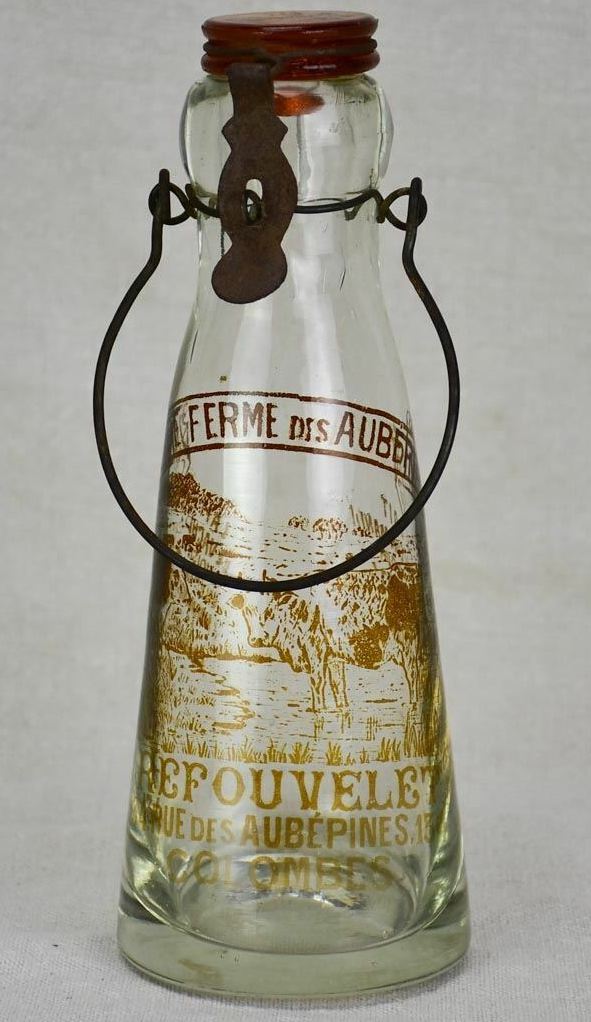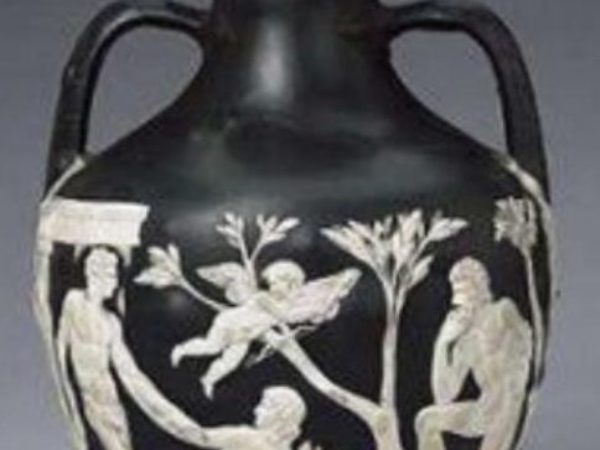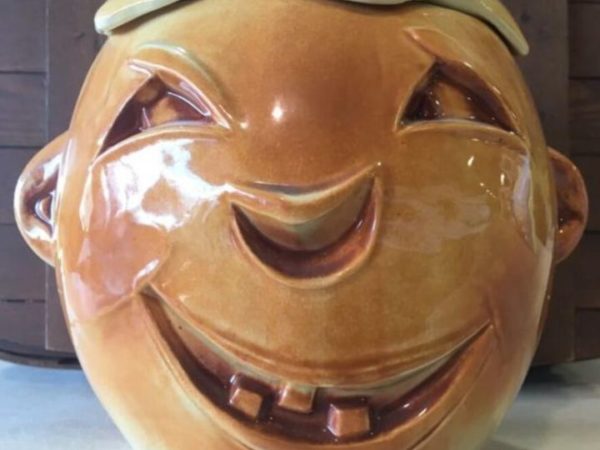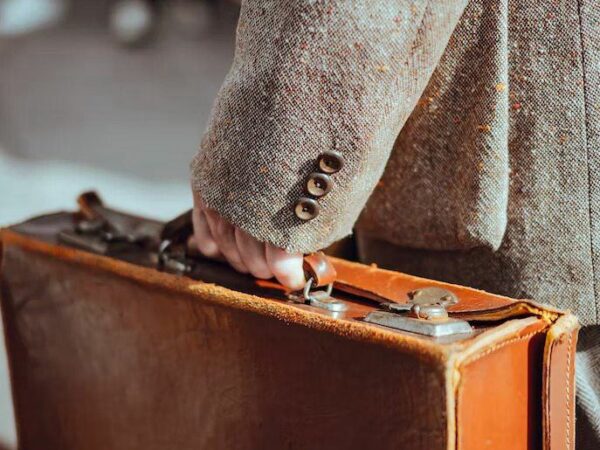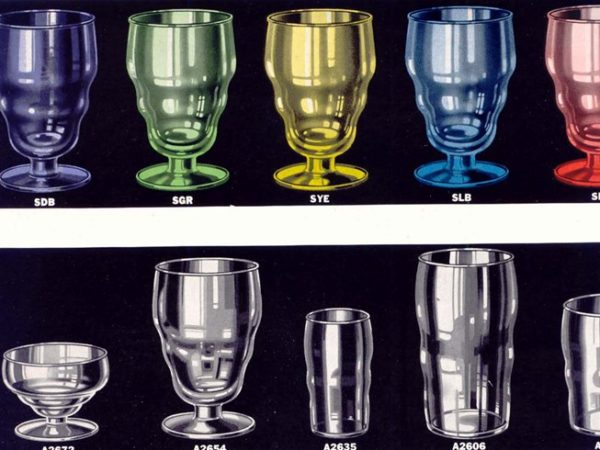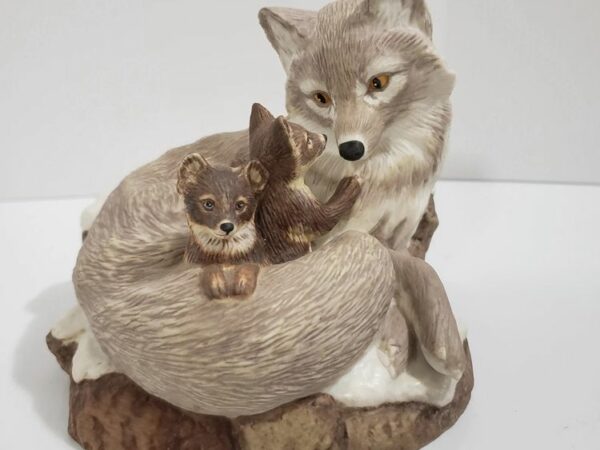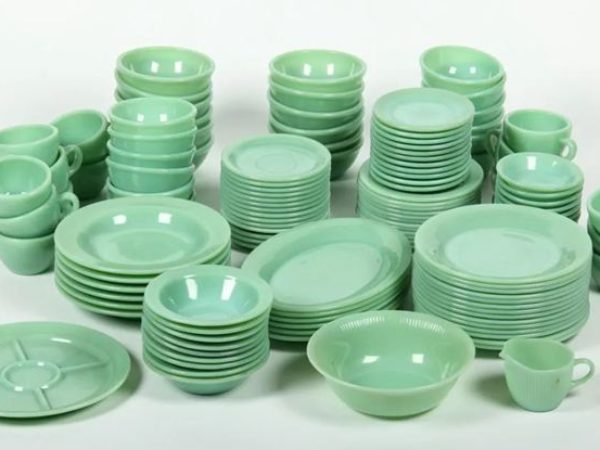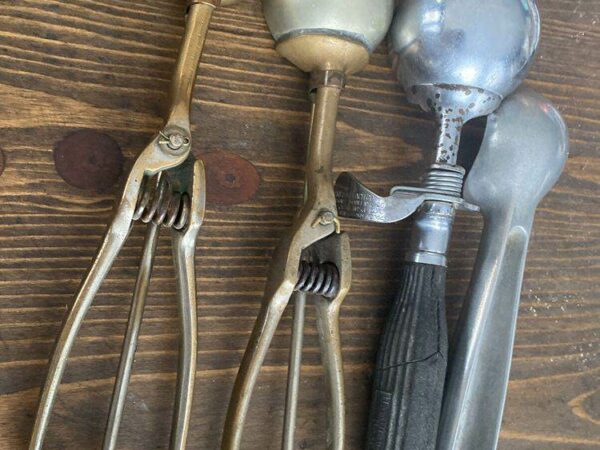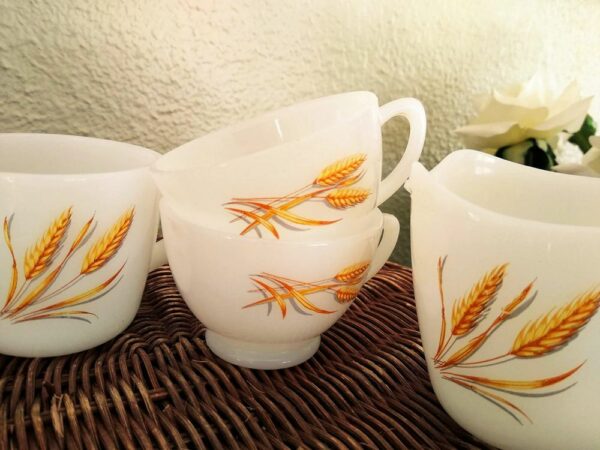Are you an antique milk bottle enthusiast? Or are you seeking to understand the market for it so that you can make serious investments? Whichever reason it may be, it’s clear that you’d like to know why they’re valuable m so that you can create your collection or trade your antique milk bottle for significant monetary gains.
And for this to be possible, your antique or vintage milk bottle must possess authentic properties or factors that are in tune with demand amongst your collectors, such as age, the bottle structure, Markings, brands, and type of glass. All these need to be suitable for the milk glass in question, as it is the difference between your piece costing a few tens, hundreds of dollars, or several thousands of dollars.
So please read on as we discuss what makes your antique or vintage milk bottle valuable and how to determine its value. There will also be a top 10 round-up of rare antique milk bottles of different prices to make a quick price reference with your antique milk bottle or collection.
Table of Contents
Popular Antique Milk Bottles brands
Dyke’s Dairy
It is one of the most popular dairies in America, located in Warren, Pennsylvania. They produce glass milk bottles that are etched with the brand names, logo, and labels in red. They also know to have war slogans on specific models like: “plan all meals for victory” and “Food Fights Too.”
Golden Arrow Dairy
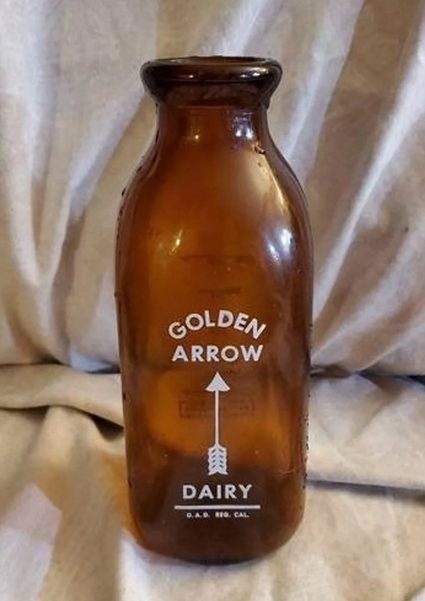
Golden Arrow dairy is a famous company in San Diego established in 1948, so its bottles are vintage pieces. The typical design to identify them is an arrow facing upwards, a cow, or both Etched in orange on the bottle. Also, their bottles come in both clear and amber.
Ohleen’s Milk
Here’s another vintage dairy brand from 1943 that produced milk bottles. Like Dyke’s Dairy, its logo also consists of a war slogan. Such as “Ohleen for Victory.” Apart from that, they also utilize the image of a farm. All of their bottles are clear transparent pieces.
Johnson Dairy
This company came around the early 1900s. To identify its bottle, you should notice its embossed brand name on the glass.
Other Popular Antique Milk Bottles brands
- Chicago Creamery
- Bourbon’s Dairy
10 Most Valuable Rare Antique Milk Bottles Worth a Fortune
Antique Milk Bottle |
Price($) (mint condition) |
Price($) (poor condition) |
RARE antique BUTTE MONTANA Milk Depot TIN TOP BIM bottle CHICAGO CREAMERY Co. |
500 |
100 |
Antique 1920’s The Model Creamery Dairy HP Milk Bottle I.H. Pores Cleveland Oh |
20 |
5 |
Vintage Borden’s Dairy Glass Milk Bottle One Quart Embossed Script WWII era |
50 |
10 |
BENTLEY and SONS FAIRBANKS ALASKA Quart Milk Bottle |
250 |
50 |
Vintage Glass Milk Bottle Dairy-Land Creamery |
100 |
20 |
1900s Dyke’s Dairy Youngsville-Warren PA. Pyro Wide Mouth Gallon |
100 |
20 |
1920s Milk Bottle Vintage Embossed PINT Cape May NJ, FS Schellenger Dairy RARE |
200 |
40 |
RARE VINTAGE 24 1/2 pint Cloister Dairy bottle |
100 |
20 |
XRARE Antique New Brunswick NJ Hygienic Jersey Milk Bottle SCA Purple Quart TREQ |
400 |
80 |
Antique French glass milk bottle with brown decoration |
1000 |
200 |
10. RARE antique BUTTE MONTANA Milk Depot TIN TOP BIM bottle CHICAGO CREAMERY Co
It is a rare piece because it contains two brands embossed on its surface. The first and main one is for the company that produces both the bottle and the milk.m which is Chicago creamery. At the same time, the other brand is for a depot. The bottle is a hand-blown piece that dates back to the 1800s.
Price – $(500)
9. Antique 1920’s The Model Creamery Dairy HP Milk Bottle IH Pores Cleveland Oh
Here’s a vintage glass milk bottle from the 1920s. The design on this bottle consists of an embossed pattern along the bottleneck region and the brand’s initials (Logo and labels). Although, this bottle has scratches that can be negligible.
Price – $(20)
8. Vintage Borden’s Dairy Glass Milk Bottle One Quart Embossed Script WWII era
It is a one-quart clear milk bottle with its brand name embossed at its center. Unlike other milk bottle models during World one 2, this is one without a war slogan.
Overall, the piece looks to have scratches and some signs of cracking, so this bottle is not in mint condition.
Price – $(50)
7. BENTLEY and SONS FAIRBANKS ALASKA Quart Milk Bottle
It’s a beautiful and ultra quarts bottle from Bentley’s manufactured in the early 1900s. The bottle has scratches, and it appears to be in mint condition overall.
Price – $(250)
6. Vintage Glass Milk Bottle Dairy-Land Creamery
It is an antique milk bottle from the early 1900s. You can see from its four-digit phone number label left at the base of the milk bottle (1330) by the dairy to customers’ access to make orders for delivery. This antique bottle is available in perfect condition (void of scratches, cracks, scuffing, and damage in its Etched branding label).
Price – $(100)
5. 1900s Dyke’s Dairy Youngsville-Warren PA. Pyro Wide Mouth Gallon Deposit 15 cents
Unlike most previous bottles on this list, this one is a slightly larger option than the one quart. You can also tell from its wider mouth, sealed via a wide cardboard cap and a metal bail at the bottleneck.
Its condition is pristine. There are no cracks, signs of scuffing, or apparent damage on the Etched label.
Price – $(100)
4. 1920s Milk Bottle Vintage Embossed PINT Cape May NJ, FS Schellenger Dairy RARE
It is one of the very few Schellenger one-pint dairy bottles made in the 1920s, embossed with its F. S initials at the center and surrounded by its labeling. The bottle is in pristine condition, with fewer scratches and stains.
Price – $(200)
3. RARE VINTAGE 24 1/2 pint Cloister Dairy bottle
Here’s a collection of cloister dairy bottles with 24 1 or 2-pint bottles. Only 10 of them have the cloister brand name Etched on them, while the remaining 14 bottles are unmarked. Their overall condition is alright, with a few scratches and stains.
Price – $(100)
2. XRARE Antique New Brunswick NJ Hygienic Jersey Milk Bottle SCA Purple Quart TREQ
It is one quart round bottom milk bottle with a purple color, making it rare. Its color indicates it’s from the mid-1900s or a bit earlier, so your piece is most likely vintage. There are no scratches, so that it will have a good resale value. However, there is a bit of stain on the base of the bottle.
Price – $(400)
1. Antique French glass milk bottle with brown decoration
Unlike the previous sets of American or British milk glass bottles, this one is from a French dairy known as “ferme dis auberpines.” The design on this piece consists of the brand’s name, along with slogans written in French. And an image of the cow on a farm, all Etched in the color brown or purple.
Price – $(500 to 1000)
How To Tell The Age Of Your Antique Milk Bottle
Here are several ways to tell the age of your antique milk bottles:
Pontils
In the early 1800s, glass milk bottles were popularly hand-blown to their shape until 1870. The process usually involves using a rod that helps the Glassblower hold the glass mold in place while blowing air into it. After the inflation process, a mark becomes present on the bottle after removing the rod due to its rod getting slightly deep into the bottle while in a molten state. The result is a scar after its removal. This scar is known as a Pontil.
Note: if your antique milk bottle has a sign of Pontils, it’s most likely an antique price from the 1800s.
Seams
When mouth-blowing glass milk bottles were popular, the bottles usually came out with noticeable seams, which you can find at the base of the bottle and as a lining from the top of the bottle to the bottom. A three-piece mold is set up to be comfortably on the glass blowing rod. The decay at the bottom and two longer molds at the sides. Bottles with such Seams are probably from 1880 to 1910.
Note: information or numbers are usually around the seams. Such as dates, mold numbers, and plant code.
The shape of the bottle
Another way to tell the age of your antique bottle is from the shape of the milk bottle base.
If your antique milk bottle possesses a round-bottom base, then it’s likely to come from the mid-1800s or before the 1930s. However, if the milk bottle has a round-shaped bottom and tall sides, it’s most likely made in the 1930s.
After 1940, square-shaped bottles with shorter sides became popular as other experimental bottle base shapes.
What makes Rare Antique Milk Bottles valuable?
Here are several factors that make your antique milk bottles valuable:
Age
Your old milk bottle has to be an antique first. It means it should be at least 100 years old. But how can you tell? Milk glass bottles with such an age were hard to make. Especially the milk bottles that possess unique intricate designs.
Before the invention of the glass-blowing machine, milk glass bottles with hand glass blowing rods were popular. Such a method requires more effort but accuracy and precision in the design are non-existent. It is why it’s somewhat easy to identify the antique glass, as you can notice signs of crudeness. Like the pontil marks from the glass-blowing rod, seams in the bottle sides and base.
Apart from the physique of the milk bottle, you can also identify its birthday from the dates or codes on it, which you can find on the seams of antique bottles.
Note: The antique market for milk bottles isn’t limited to age. There are vintage milk bottles worth more than certain antique milk bottles in the eyes of a collector.
Manufacturer’s Markings
Another valuable factor that should be present in your antique milk bottle is its Manufacturer’s mark. This information will help you get a good idea of who and even the time of manufacture for your antique milk bottles. Knowing this will offer you a better understanding of your antique milk bottle’s value, especially in a market where certain brands of specific models from a particular time happen to have high demand.
The maker’s mark of an antique milk bottle can come in various forms:
- Logo
- Label
- Special mark
All of which only offer information on who made the milk bottles. However, these marks are put on the glass to enable companies to prevent other milk bottling companies from reusing their bottles. As a collector, you can use this to understand its era.
Here are several marking types you can find on antique milk bottles:
Embossed Markings – this is the earliest form of marking milk bottles done by dairies since 1870. It consists of the brand’s name, logo, and initials sitting on the bottle’s exterior, usually at the center close to its base.
Etched labels – this is a later form of identifying Antique Milk glass, which took place in 1930. This mark involves imprinting your bottle with a hot metal plate just sometime after blowing the milk glass bottle.
Body design: It consists of symbols and writings such as the company’s logo or the name of a particular style. All around the body of the milk bottle. Such is possible by using a specific mold with patterns of the desired bottle design.
Labels with colors – after 1933, adding various colors to milk bottle labels became popular.
Bottle Color
The color of your antique milk bottle can play a huge role in its pricing because dairies commonly use clear bottles to display the white content of the milk, which is known to attract buying customers. However, some brands sought to make use of bottles of varying colors. The most-likely set of colors you get to see apart from clear bottles includes:
Green bottles – bottles of the color green are some of the experiments from the 1930s. It is known to contain eggnogs instead of milk.
Cobalt blue – this is one of the rarest milk bottles as the originals were actual prototype bottles from the hotel’s restaurant (Hotel Sherman inn) from the 1950s.
Amber-colored milk bottles – these bottles are usually from the 1930s. They are known to contain mostly chocolate milk and buttermilk due to Their slight opaque color, which helps to protect the milk from Sun rays.
How to tell how much your Rare Antique Milk Bottles are worth
The price of your antique milk bottle can be determined via the following:
Condition
Antique Milk Bottles are extremely delicate pieces that can shatter from shallow impacts or crack from slight hits. Such an unfortunate occurrence would significantly affect the price of your antique milk bottle. So, instead of selling them at the total cost, you may have to let them go at a significant drop price only if the interested collector is still interested in the rare piece.
But, if your antique milk bottle has fewer signs of cracking and its label is intact, you’re most likely going to make a full-price sale. Also, fixing a broken antique milk bottle will not solve anything. Once it’s cracked open, it’s gone! Potential buying collectors won’t even consider the milk bottle. And its resale value will be zero or close to it.
Note: there are ultra-rare antique milk bottles in which light still holds their value despite some damage, like milk bottles with an amber and cobalt blue color. It’s because such colors are rare in the antique milk bottle market.
Rarity
To get a good idea of your antique milk bottle price, you need to confirm its rarity in the market because that will enable your antique milk bottle to stand out among the standard milk bottle designs and increase your chances of getting a bigger payout.
Several features can make your antique milk bottle a high demand rare piece:
Color – the color of your anti milk bottle can be why it’s so rare. It is because most original antique milk glass bottles were commonly clear bottles. So it is rare to find milk bottles of other colors. However, there was tea when Bottles of different colors were in the market. Such as:
- Ruby red
- Cobalt blue
- Green
- Amber
Bottle shape
Another feature that can set your antique the milk bottle from the rest of what’s common is its shape. Most of the milk glass bottles consist of the regular bottle shape. However, specific bottle shapes imitate real-life figures. For instance, there are milk bottles with a structure or shape that replicates a baby’s head.
Special Labeling
Apart from the shape, your antique milk Glass bottle can also be rare due to the type of labeling on it.
A good example is antique bottles with two labels or a logo and a label. One is for the original brand or dairy that made the bottle, while the other is for a store. Diaries had such bottles with such labeling to identify the milk bottles that go to their storage and the ones that go to the patterning store’s storage room.
Milk Bottles with such labels are usually limited, and thus, they’re pretty rare pieces as well.
War slogans: Also, milk bottles possess war slogans, which could be from World War I or two. These pieces are also rare in the antique milk bottle market.
Domed Glass Lid and metal bail – antique milk bottles with such are pretty rare because milk bottles with sanitary cardboard caps were popular.
Authenticity
Antique glassware is easy to fake, at least to the point that an unsuspecting buyer could mistake it for the real deal. It is why it’s good to look for signs that confirm it’s an antique. For instance, antique glassware comes with wear from past usage. Such as scratches and some signs of cracking.
Another way to confirm your piece’s authenticity can be from its label. If the etched title scratches, then it’s a fake because etched tags don’t come off quickly. If it does, it’s most likely a graphic imprint on the glass or a paint-over.
Note: such cases are pretty familiar with peer-to-peer online marketplaces. You cannot examine the antique milk glass bottle physically. So it would be hard to tell which is genuinely good or a fake.
Compare to Recently-Sold Pieces
You can compare your antique glass milk bottle with recently sold pieces from popular online peer-to-peer marketplaces like eBay, Etsy, and 1stdibs. Here are some of the recent sales you can compare with your antique glass milk bottle:
- An early 1900s round based bottle from a hines dairy farm was in good condition sold for $170.
- A 1940s vintage one Quart milk squared bottle from Annapolis dairy is with a few scratches and stains but it is still sold for $50.
- A rare antique French milk bottle with brown and decoration in pristine condition is sold for up to $500.
Hire an Appraiser
Since you’re a newbie in selling or buying antique glass milk bottles, you can depend on experts to do the job for you—especially an appraiser who is familiar with working with glass milk bottles specifically. You can easily hire one from an online appraisal site. Apart from the service, you can also get support from the blog sections of the site, which can offer more insight and tips on valuing your antique Glass milk bottle.
Where to sell Rare Antique Milk Bottles
One of the easiest ways to sell your antique milk bottle is via an online peer-to-peer marketplace like eBay, Rubylane, or Etsy. Because you get to enjoy advantages such as:
- An increase in your chances of getting a customer
- It is affordable to sell with
- Convenient to use.
However, it comes with its flaws. Such as lack of assistance with valuing your antique glass milk bottle piece, as you’d enjoy selling via an auction. A pricing dispute is also likely to occur. And as a buyer, you can’t physically examine your milk bottle before making a purchase.
Apart from peer-to-peer online marketplaces, you can take advantage of your physical stores and marketplaces such as estate sales, auctioneers, garage sales, and your local antique store.
FAQs
Q: how do you spot a reproduction?
A: Antique glass milk bottles are notoriously known to be replicated illegally and sold to unsuspecting antique collectors. It’s also straightforward to mistake milk bottles from modern dairies as antiques. Here are ways to tell which is genuine and which is a fake or simply a reproduction:
- If the label with color scratches off, it’s most likely to be a reproduction.
- Compare high-demand antique milk bottles with the original.
- There are antique milk bottles with fake war slogans. You can notice them by the phony date stamped on them.
Q: How can you tell how old a milk bottle is?
A: there are several ways to tell the age of your antique glass milk bottle via physical examination:
Pontil marks are usually the byproduct of the milk bottles being hand-blown by glass blowing rods. Such marks are common to glass milk bottles that were hand-blown which was a popular way of making milk bottles in the 17th century.
Seams – these are signs of joints between parts of the glass milk bottle. It’s usually present at the base of the bottle. It’s also the visible lining that starts at the top of the bottle and ends at the bottom.
Bottle shape – you can also tell the age of your bottle from the shape of its base. If it’s round, then it’s probably from before 1930. But if it’s a square base, then the milk bottle is most likely from after the 1930s.
Conclusion
Understanding the market is paramount whether you’re in it for the business or just an enthusiast looking for the thrill. Because there are thousands of antique bottles in circulation today, all with various reasons for their value, it will be difficult to identify them.
With this post, you should be able to comfortably make better decisions that will rival that of a seasoned antique bottle collector.
